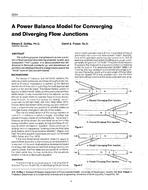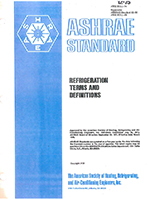Small scale heat exchangers constituted of low hydraulic diameter micro-channels are regarded as future promising devices to be adopted extensively in cooling applications due to their high convection coefficients and lower pumping power demands. However, the mathematical modeling of such devices remains challenging due mostly to the nature of the flow regime in the micro-channel. The aim of this research is to build a computational-based strategy that will aid manufacturers in designing small scale heat exchangers guaranteeing their operation in the continuum regime. A 3D numerical model of a thermoelectric cooled micro heat exchanger was constructed consisting of a thermoelectric plate (23mm x 23mm) mounted on the top of 92 staggered rectangular PDMS micro-channels (150μm x150μm) separated by 100μm thickness PDMS fins. In order to induce the thermoelectric cooling effect, a lumped mathematical model is implemented as a boundary condition to the energy equation relating the heat flux at the cold surface of the thermoelectric to the temperature difference of its cold and hot sides. This boundary condition is implicitly specified with the boundary temperatures being outcomes of the solution. A generic C code is developed and coupled with fluent solver for serial and parallel computations to iteratively resolve the cold heat flux at the boundary. A conjugate heat transfer problem is formulated with the finite volume method adopted to solve the set of governing mass, momentum, and energy equations in the fluid zone (air) and energy in the solid zones (PDMS plate and fins). The method starts by imposing a fixed pressure at the outlet sections of the domain. A uniform velocity profile with arbitrary temperature is supplied at the inlet section of the heat exchanger. The hydrodynamic and thermal fields and axial distribution of Knudsen number (Kn) are then predicted in the interior domain. Different profiles in Knudsen number variation are observed depending on the simulated operating conditions. According to the spatial distribution of Knudsen number, the model parameters are updated for cases when the flow regime falls outside the continuum. As a future target, a design map relating the inlet air temperature, outlet pressure, and Reynolds number will be generated as an engineering tool via an integrated low computational cost methodology.
Citation: 2nd Intl Conf: Efficient Bldg Design
Product Details
- Published:
- 2016
- Number of Pages:
- 7
- Units of Measure:
- Dual
- File Size:
- 1 file , 2 MB
- Product Code(s):
- D-ICEB16-25


